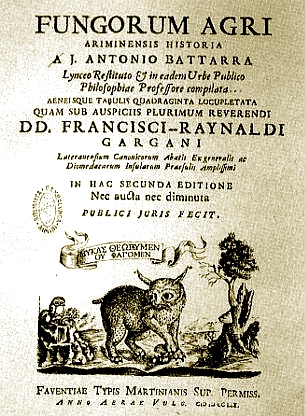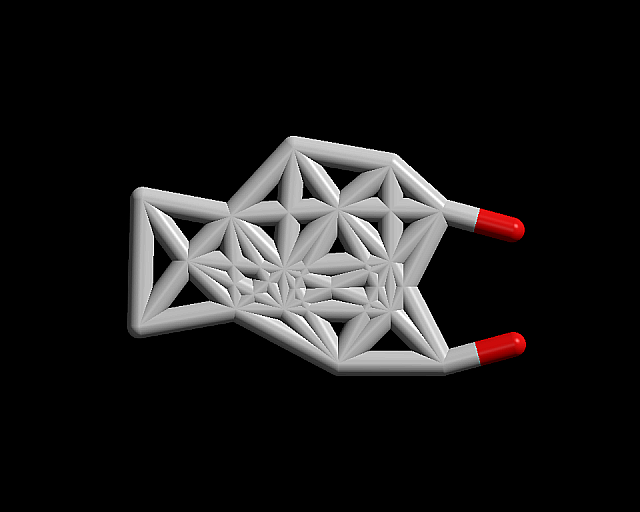
|
Biological Magnetic Resonance Data BankA Repository for Data from NMR Spectroscopy on Proteins, Peptides, Nucleic Acids, and other Biomolecules |
Member of
|

Isovelleral: a "pungent principle"
Many living organisms produce secondary metabolites to cope with external factors. Such metabolites play important roles in the co-existence and co-evolution of species, having a wide range of uses: defensive and attractive, territorial, reproductive etc. They enable and control vast number of functions and are responsible for healthy existence of the organisms.
For example, wild animals eat various species of plants and fungi, yet food poisonings are very rare in nature. In various ways possible food - or "prey", chemically distracts, scares off or warns the predator: "do not eat me". This is a demonstration of defenses that potential food sources tailor to survive. They produce powerful compounds: antifeedants, repellents and toxins.
Experiments employing natural fungivores: possums, resulted in isolation and identification of such a typical secondary metabolite produced by some fungi. This chemical compound is responsible for a pungent, hot tasting qualities found in certain mushrooms known as milk-cups. Possums employed in the research are quadrupedal diprotodont marsupials with long thick tails - and they love mushrooms. Some of the wild fungi species that were fed to the possums during the experiments: Lactarius vellereus, proved to be especially pungent and eventually yielded a "pungent principle": the irritant fungal terpenoid isovelleral. Amazingly, both the possums and humans were finding edible and palatable, or developed aversion to the same species of the fungi, as the experiments showed. [1]
The "pungent factor" isovelleral contains an unsaturated 1,4-dialdehyde moiety in the molecular structure, that is very common in the similar secondary metabolites. To date, many terpenoids containing an α,β-unsaturated 1,4-dialdehyde (3-formyl 3-butenal) structural parts have been isolated from natural sources such as terrestrial plants and fungi. Algae, liverworts, arthropods, sponges, and molluscs are also the natural sources of unsaturated 1,4-dialdehydes. In general, these compounds believed to form a multifaceted chemical defense system that protects organisms from parasites and predators. Their pungent, hot, stinging action is based on the ability of the intact 1,4-dialdehydes to covalently bind primary amine residues in proteins.
The possibility that the unsaturated dialdehydes may be pungent through activating vanilloid receptors VR1 was investigated. The vanilloid receptors VR1 are the non-selective cation channels with high permeability to Ca2+. Specifically, isovelleral was found to excite sensory neurons through activation of TPRA1, an ion channel involved in inflamatory pain signalling. As antagonist with different binding profiles towards the vanilloid receptor 1 (TRPV1) and an activator of TRPA1, isovelleral and the analogs are currently under intensive investigation as possible novel class of analgesics, with particular application in geriatrics. Isovelleral also demonstrates antimicrobial, cytotoxic, phytotoxic and mutagenic activities, and is widely researched in anti-tumor drugs studies in various scientific communities. [2, 3]
Historically, the year 1755 saw the publication of Giovanni Antonio Battarra's, an ordained priest and Doctor of Philosophy in North East
Italian monastery, book "Fungorum agri Ariminensis historia", an account of the fungi found near
the town of Ariminum (now Rimini), including pungent Lactaria species. The book's title page shows
a nocturnal creature that has a paw on a mushroom; the banner carries a sentence in Greek: Mykas Theoroumen
ou Phagomen and, in translation: We study mushrooms, but we don't eat them. Possible healing
properties of plants and fungi producing isovelleral and analogous substances, and their medical
applications are often found in ancient medical texts of many cultures, in ancient Europe, Central Asia, China. The ancient doctors treated
with related fungi and bark-containing concoctions the patients with cold, muscular pain, numbness, twitching limbs, abdominal pain and
diarrhea, tuberculosis and kidney stones. Even the pungent qualities are found useful: the fungi species containing
isovelleral and similar terpenoids are considered palatable in many cultures from Northern and
Eastern Europe to South East Asia, upon gastronomic treatment or as a dry spice.

The Metabolomics database at the BMRB contains 1H, 13C, 13CDEPT90, DEPT135, TOCSY, COSY45, HSQC, HMBC and HSQC-TOCSY-ADIA NMR spectral data for isovelleral, obtained at the Bruker Avance III 500 and presented as the time domain data, the spectra pictures as well as the tables of peak transitions and assigned chemical shifts. BMRB ID: bmse001101.
1. Camazine, S. 1983. "Mushroom chemical defense: Food-aversion learning induced by hallucinogenic toxin, muscimol." J. Chem. Ecol. 9:1473-1481. DOI: 10.1007/BF00988513
2. Szallasi, A., Jonassohn M., et al, "The stimulation of capsaicin-sensitive neurones in a vanilloid receptor-mediated fashion by pungent terpenoids possessing an unsaturated 1,4-dialdehyde moiety". Br J Pharmacol. 1996;119:283-290. PubMed: 8886410
3. Szallasi, A.A., "Vanilloid receptor ligands: hopes and realities for the future", Drugs Aging, 2001; 18(8): 561-73. PubMed: 11587243